Located just over thirty kilometers southwest of the city of Paro, Bhutan is Haa Valley. This hidden gem is one of the least-visited areas in the country. It’s located in plain sight along the winding road that snakes its way through the country.
The valley is home to only 14,000 people and is situated in the Haa dzongkhag (district), one of the smallest and least-visited areas of Bhutan. But despite that, there are plenty of amazing things to do in Haa Valley, Bhutan.
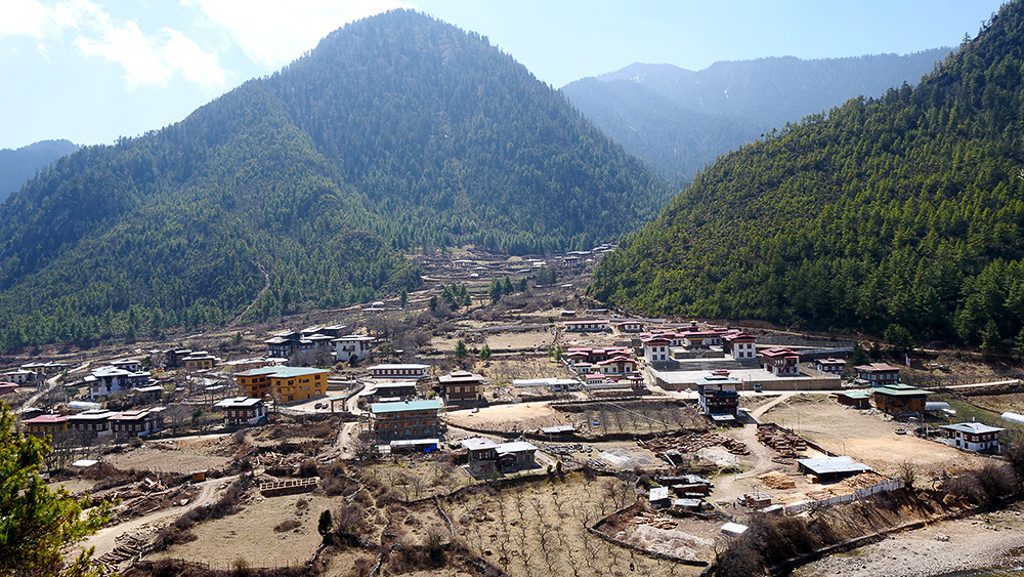
The valley extends from north to south and has a narrow floor, and is surrounded by picturesque mountains and primeval pristine alpine forest. The surrounding mountains and forests lend themselves to outdoorsy activities like hiking and mountain biking. But the valley itself is a treasure trove for explorers as well, with the Torsa Strict Nature Reserve nearby. Of course, checking out the rice, wheat, and barley fields is a must, as is exploring the hillside terraces that grow crops like chilies, potatoes, and apples. This is also called as hidden land rice valley.
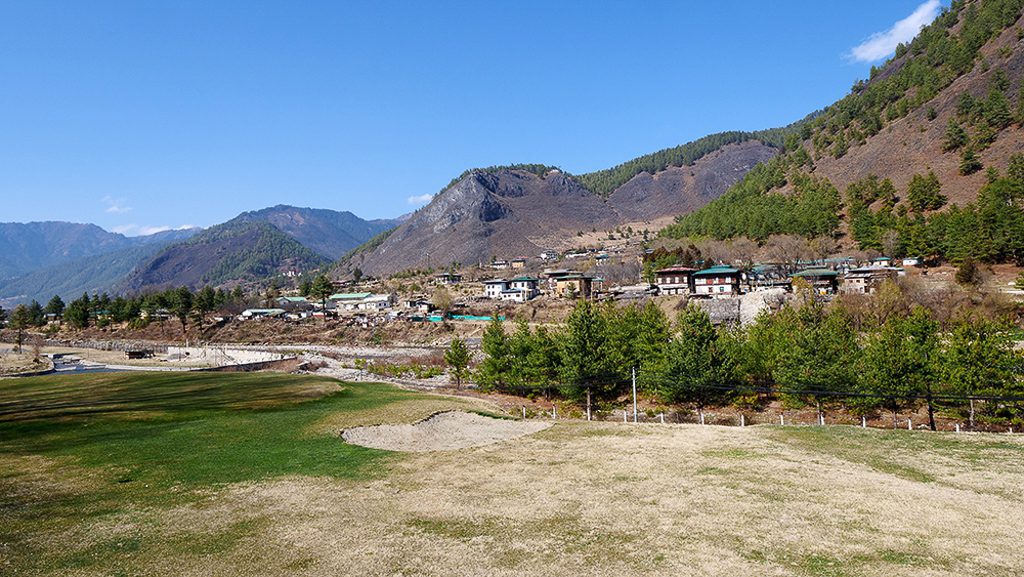
But the main highlight of Bhutan’s Haa valley is the tiny region / village of Haa, a gorgeous and traditional settlement that lies far off the beaten path. Not many visitors reach Haa valley of Bhutan. In fact, I was told during my 3.5-hour drive from Thimphu that there are more shopkeepers than customers there!

But in my opinion, it’s a must-visit, as the valley was closed to foreigners until 2002. During my quick stay there in March of 2020, I saw beautiful sites and explored fascinating monasteries with my guide Tsheten from MyBhutan. I also tried tons of traditional dishes and walked away from Haa Valley with a desire to explore more of Bhutan’s lesser-known gems. These are the top things to see, do, and eat in Haa Valley, Bhutan.
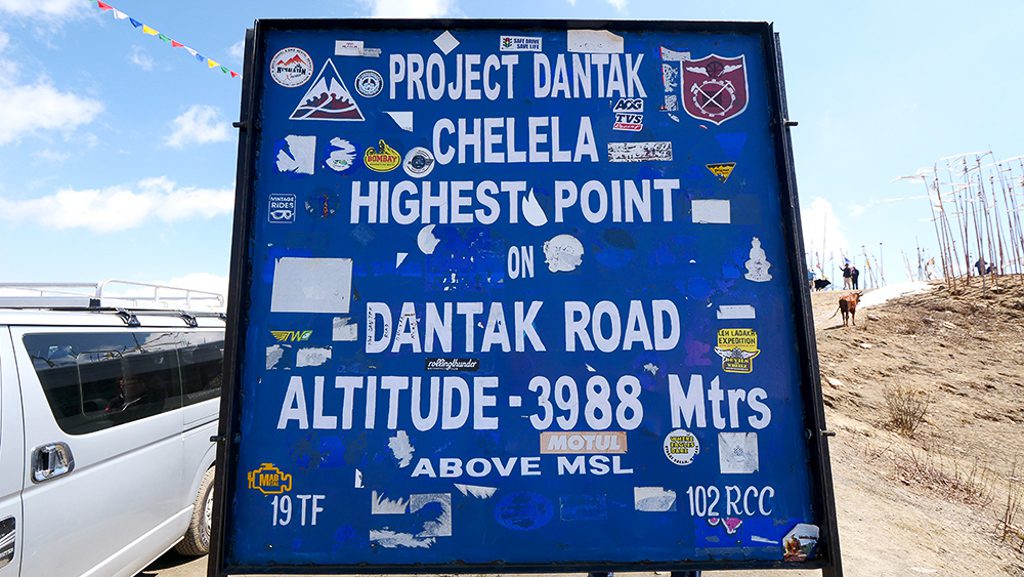
To get to Haa Valley from Paro, you’ll take the winding Bondey-Haa Highway. Along the way, you’ll get stellar views of the country’s second-highest mountain, Mount Jomolhari. It stands a whopping 7,340 meters (24,035 feet) above sea level. The mountain is one of the best things to see and do near Haa Valley, Bhutan. But you’ll need to be careful driving there!
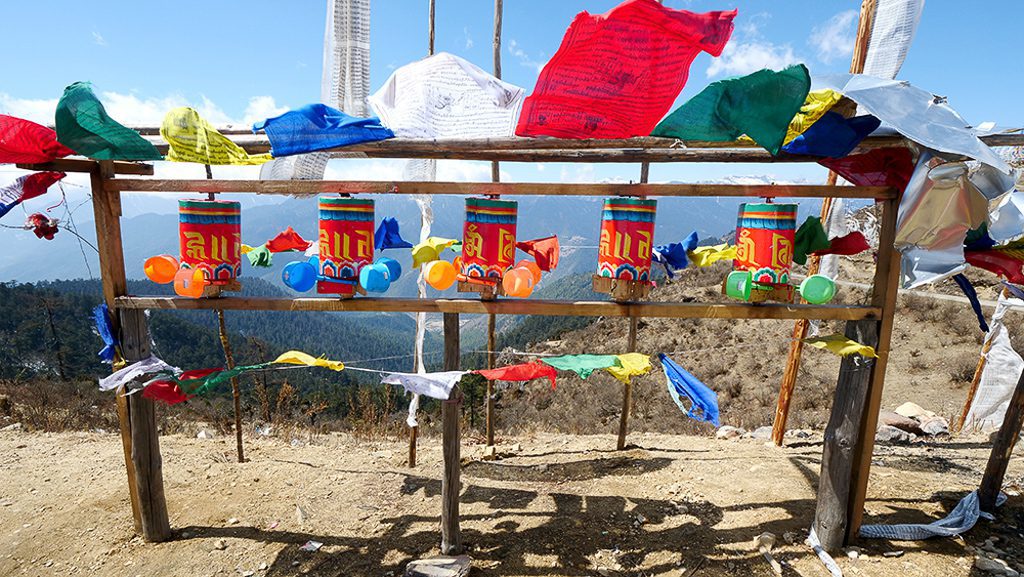
Further along the road, you’ll make it to Chele La Pass, the highest mountain pass in Bhutan. The pass lies 3,988 meters (13,083 feet) above sea level. In addition, the road is narrow with sheer drops on one side and full of sudden twists and turns. They make the area treacherous to navigate, particularly in the winter. During the colder months, the road can be slick with snow and ice and the area is vulnerable to avalanches.
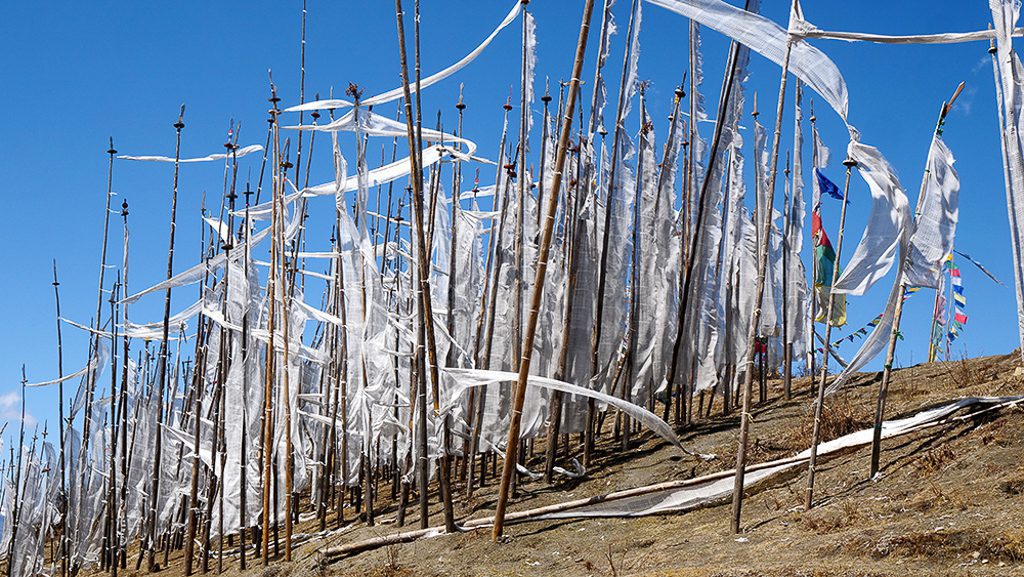
That said, the views, once you arrive at Chele La Pass, are absolutely breathtaking. You can see Mount Jomolhari and other distant peaks, as well as a number of colorful prayer flags and prayer wheels. I advise wearing proper winter gear like a coat, a beanie, and gloves, because it is frigid up there! Keep in mind, the air is thin there, so you may have trouble catching your breath. And watch out for the native yaks—some of them aren’t very friendly!
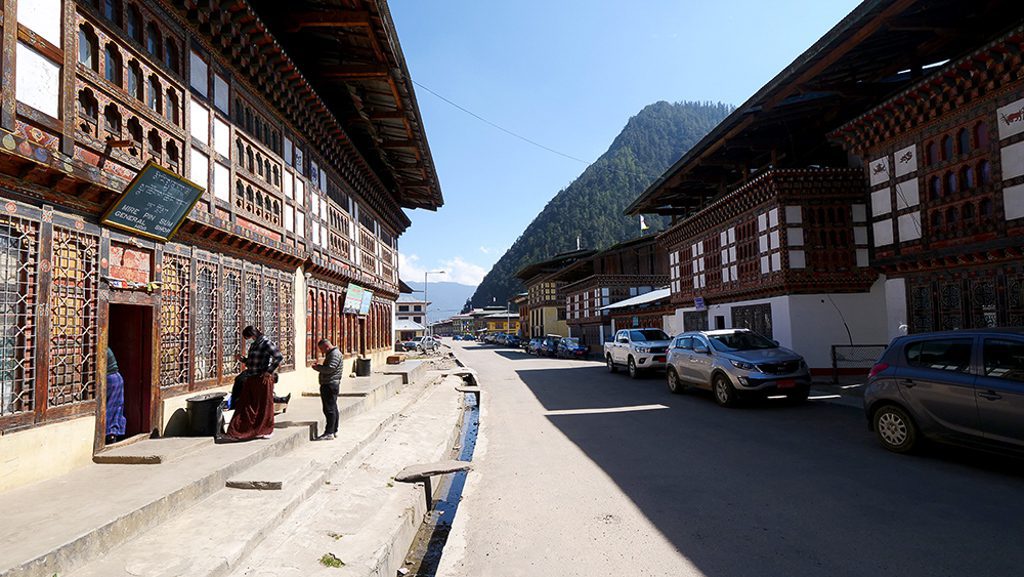
As you enter Haa Valley, you’ll probably notice a collection of homes and buildings on the valley floor. This is Haa, a quaint mountain town that oozes charm and tradition. If you visit in March like I did, be sure to wear winter gear—it’s cold and windy there! While you explore the main part of Haa town, you’ll notice that the road is lined with three-story buildings with the same general makeup: a general store or shop on the lowest level, a restaurant above it, and an apartment on the third level.
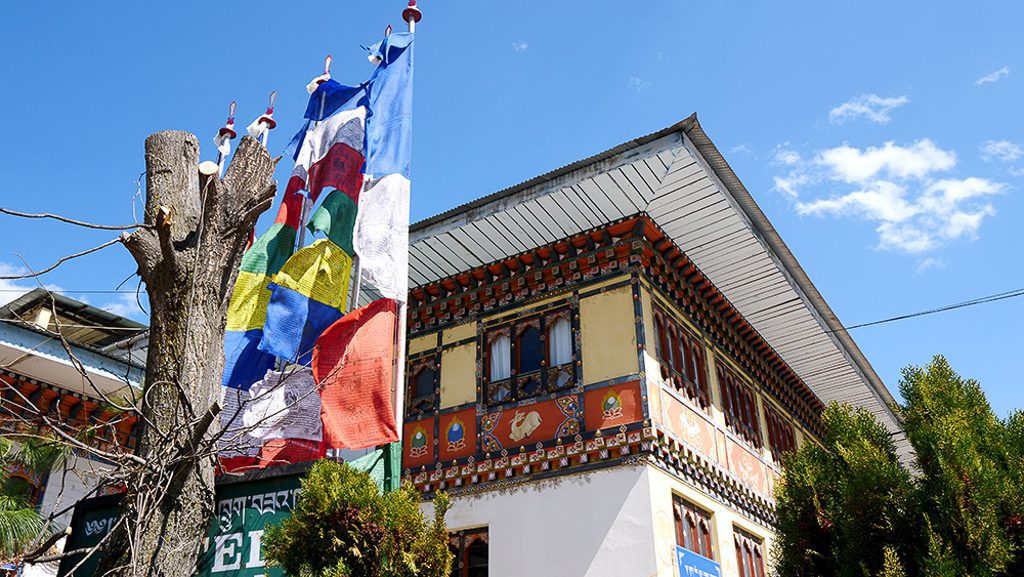
The traditional architecture of the homes and businesses is quite striking. There are lots of traditional houses along the main road. On weekends, you’ll also find a vegetable market. My personal favorite thing to do in the main part of town was to visit the shops and general stores.
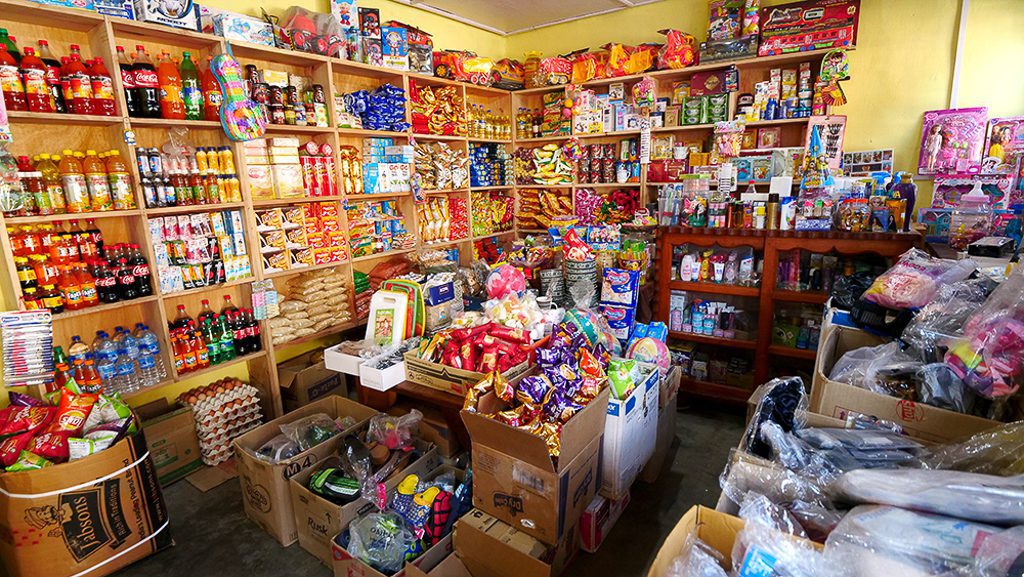
The general stores are like miniature supermarkets. They’re similar to convenience stores and sell quick snacks, bottled water, sodas, toys, loves, and much more.

There are also general shops that focus more on Buddhist items for local homes and families. I visited one that sold some religious items like extravagant Buddhist wall hangings and Buddha statues, as well as ornaments, cups, incense sticks, and large darts used in local games. I particularly liked the keychains I found there, which were made in the shapes of tigers, dragons, and skulls. The skull keychains are said to deter evil forces!
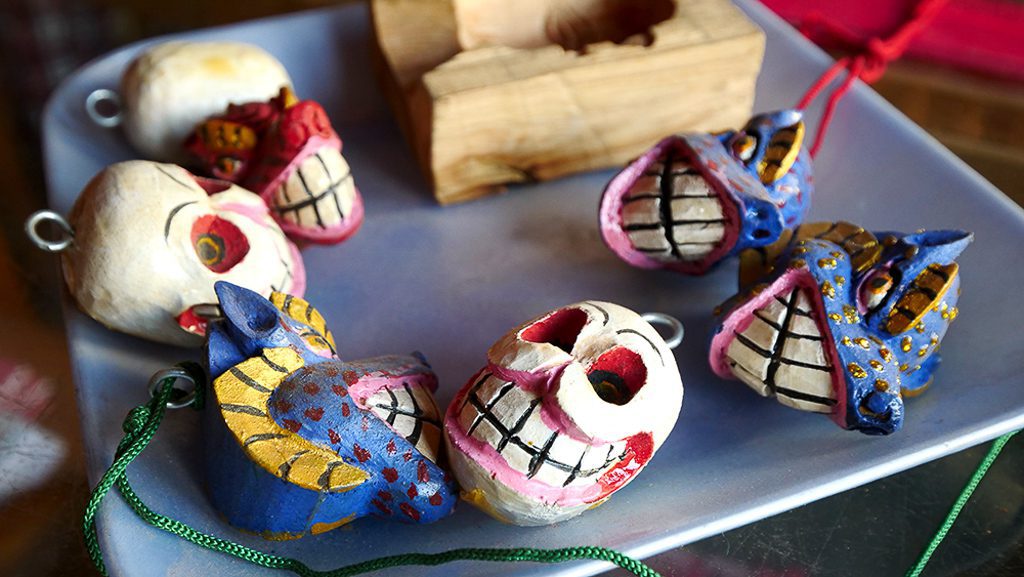
Exploring Haa is one of the best things to see and do in Haa Valley, Bhutan. In fact, it’s an absolute must!
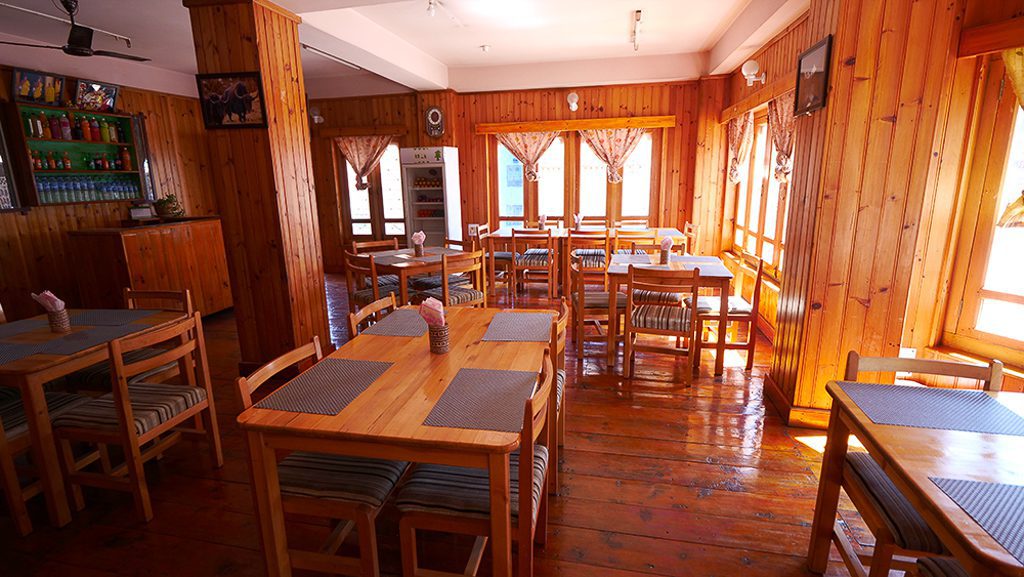
If you have your taste buds set on traditional Haa Valley cuisine during your time there, there’s no better place to eat than Pedlen Restaurant. This cozy, rustic eatery features lots of wood paneling and serves dishes that come from the valley.
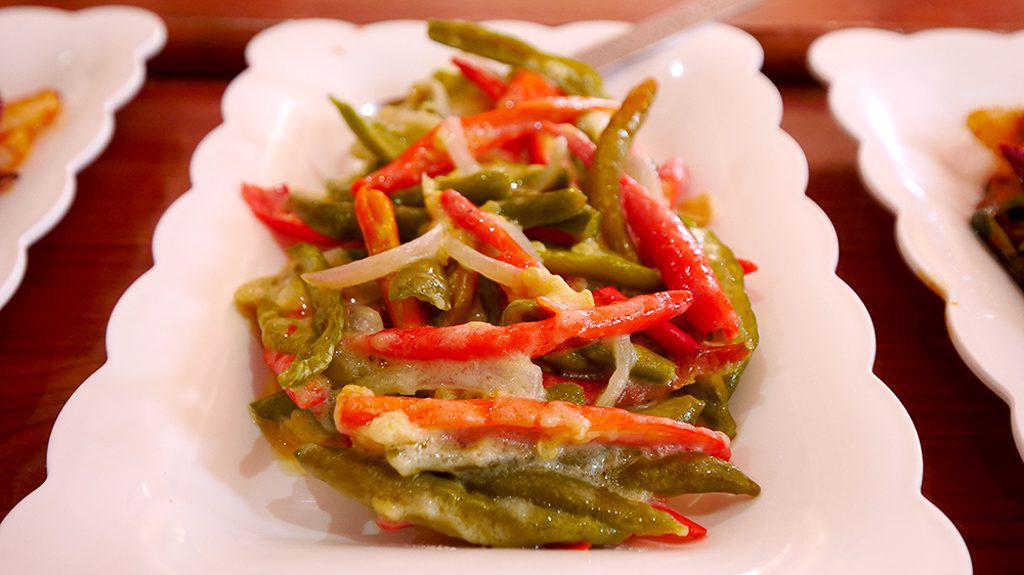
You can try lots of traditional dishes there like ema dashti, a mix of chilies and creamy cheese that is the national dish. The kind offered at Pedlen Restaurant contains a spicy and potent blend of both red and green chilies. They also serve several other chili-rich dishes like radishes with red chilies and beef and potatoes with chilies. The tender beef is juicy, tender, and perfectly cooked. I also recommend the potato fritters, papad, dal, and the moist and creamy cheese-stuffed tomatoes.
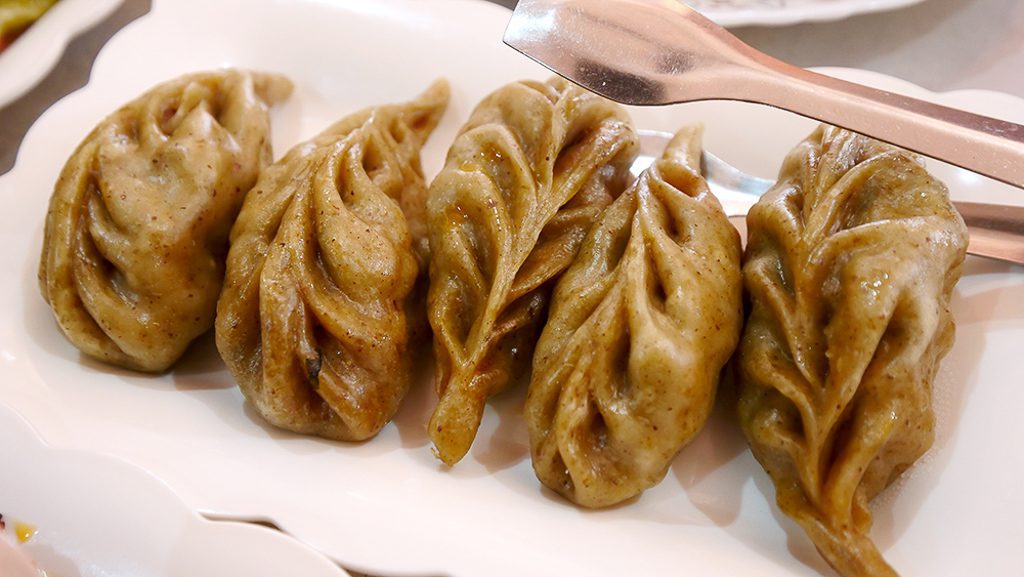
But the highlight of the menu is the hoentay, which are buckwheat dumplings stuffed with delicate and tender turnip greens. Hoentay is a local dish that originated in the valley. Flavor-wise, the turnip greens taste similar to cabbage, while the buckwheat dough is slightly bitter. I recommend adding some ezay (chili salsa) to add a bit of numbing heat. Together, the hoentay and ezay made these dumplings my favorites of my entire Bhutan trip! They’re two of the best things to eat in Haa Valley, Bhutan.
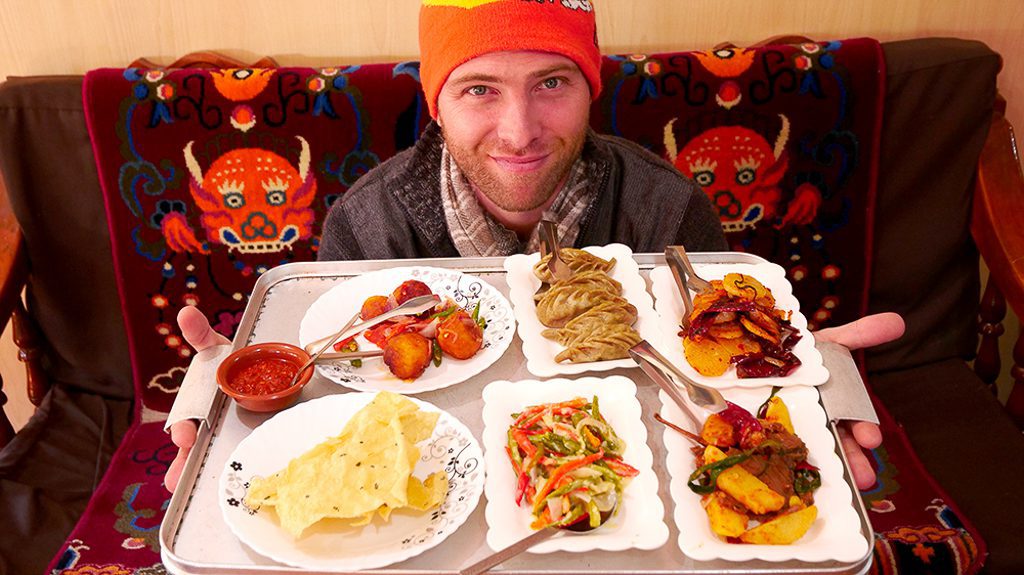
If the heat gets too intense for you, have some earthy, pink-tinted ara that’s infused with the bark of a tree. I found out earlier in my trip that the alcohol helped calm down the fire in my mouth and throat!
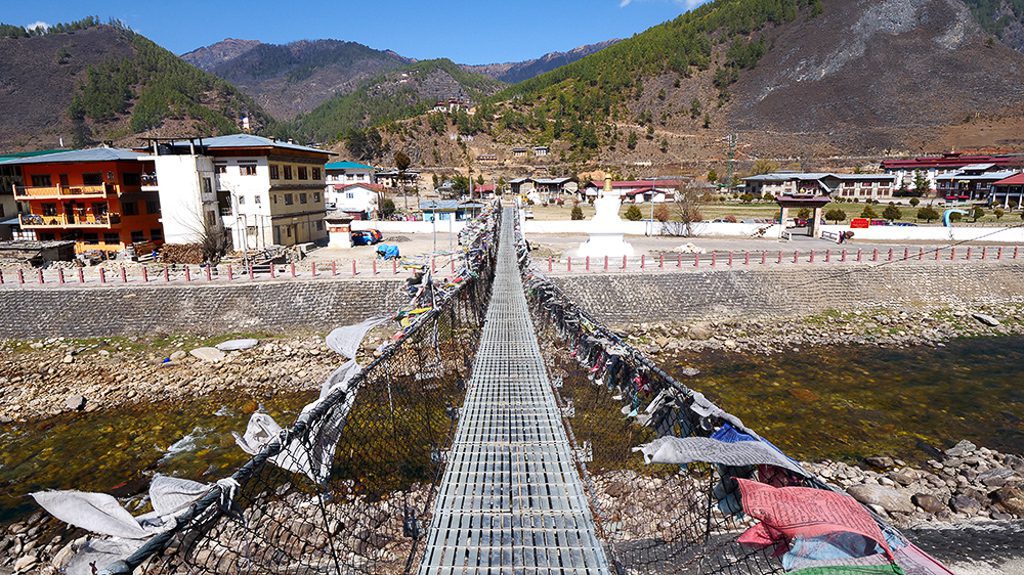
One of the best things to see and do in Haa Valley is to go on a hike. Because I had to cut my trip short, I had limited time in the valley, so I only got to go on one. My hike took me to the famous White and Black Temples (sacred site), but in order to even start your hike, you have to cross a suspension bridge spanning the Haa Chhu River.
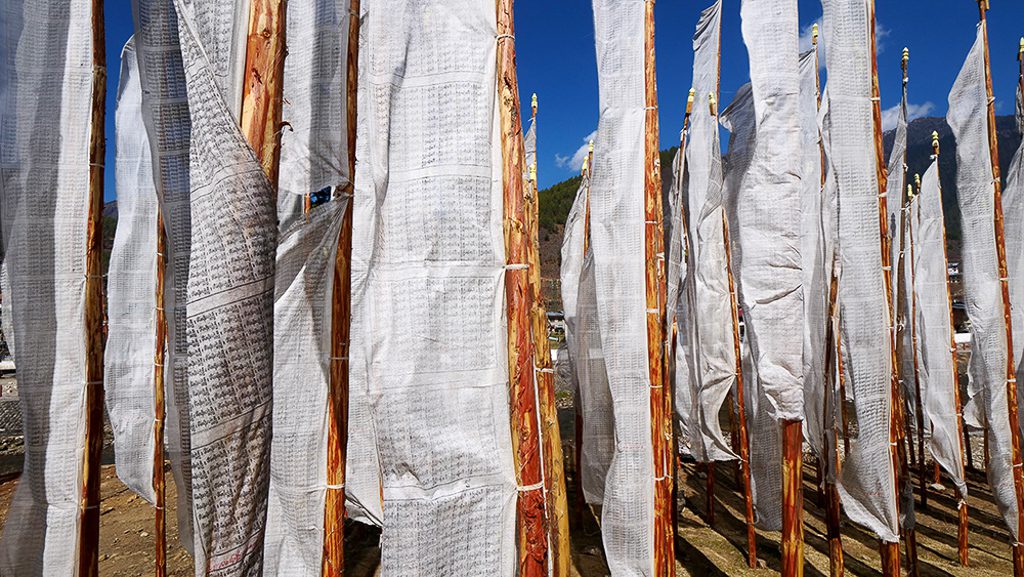
You have to climb a staircase leading up to the bridge. The bridge itself offers amazing views of the surrounding area. From there, you can cross to the opposite shore, where you’ll find a small Buddhist temple that’s made up of just two buildings.
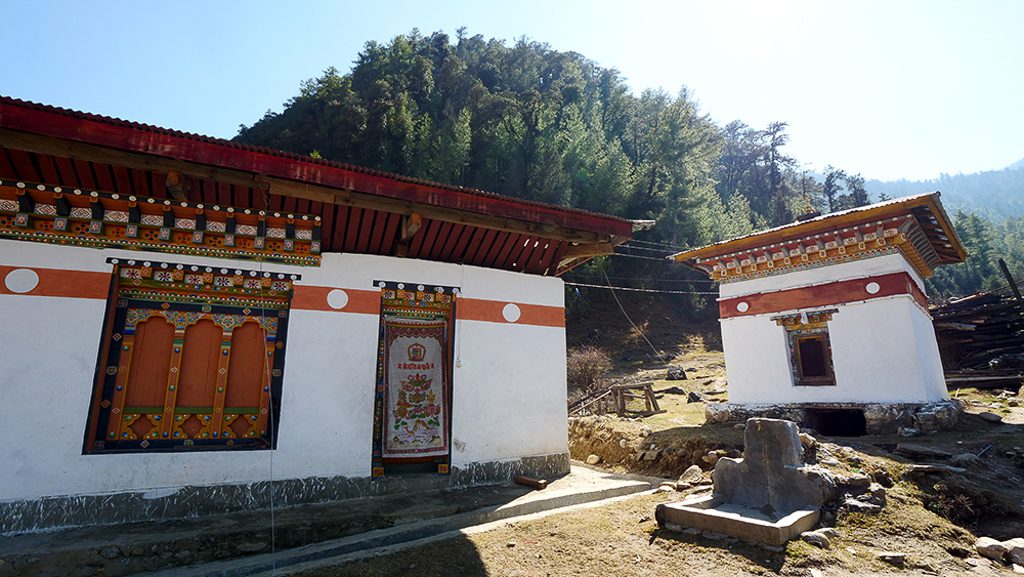
You’ll also find numerous white prayer flags there, which are placed there by families of someone who has passed away. They only have prayers written on them and represent the purification of karma. Accompanying the prayer flags is a prayer wheel. It’s a beautiful look into Bhutanese Buddhism and easily makes my list of the top things to see and do in Haa Valley, Bhutan.
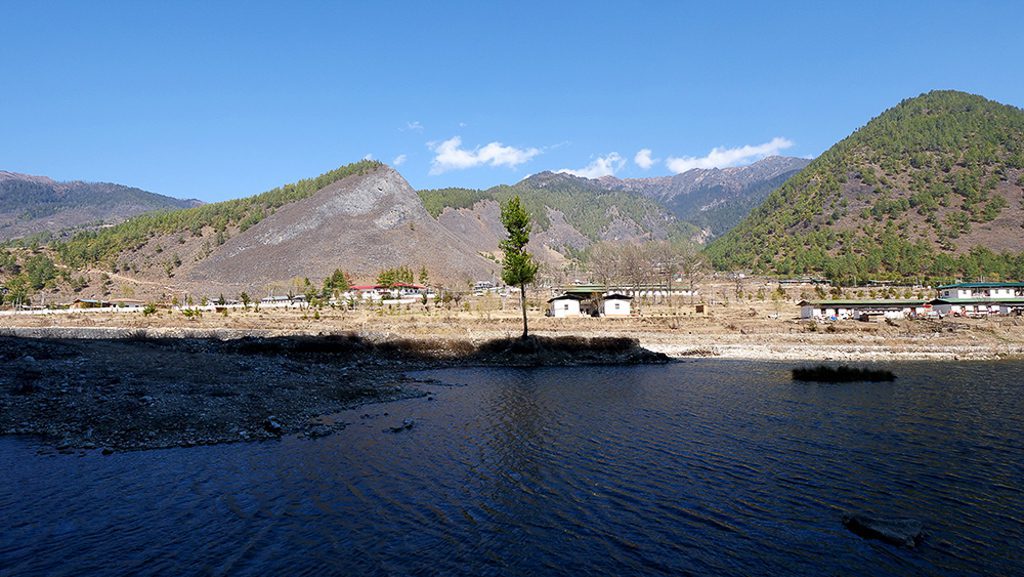
Without question, one of the top things to do in Haa Valley, Bhutan is to take a hike along the Haa Chhu River to Lhakhang Karpo and Lhakhang Nagpo, better known as the Black and White Temples. Both of these Buddhist monasteries were built in the 7th century.
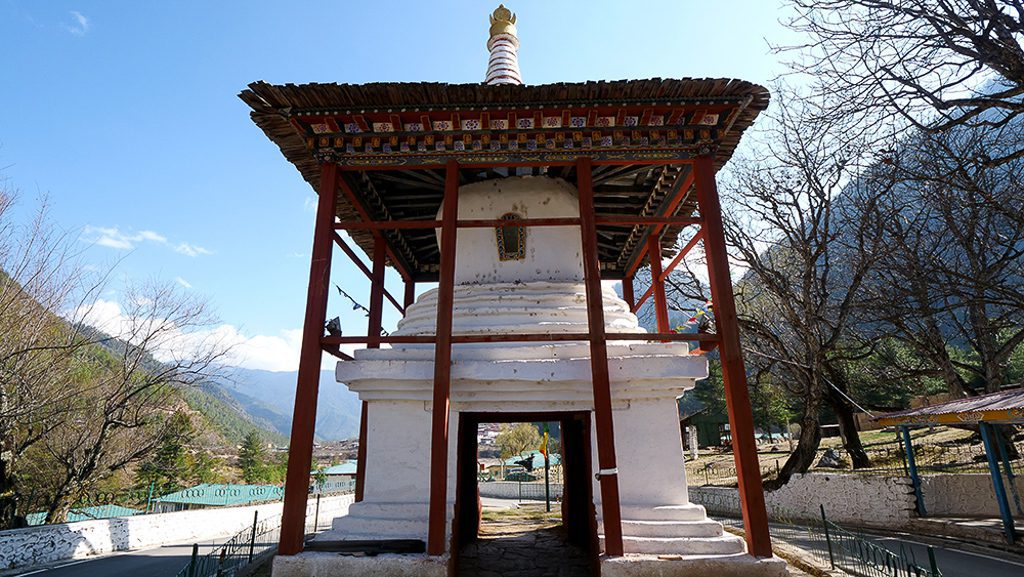
According to legend, a Tibetan king named SongtsenGampo built them after hearing a prophecy that he should build 108 temples. SongtesenGampo built two in Haa Valley that serve as guardians of the locals. He picked the locations after releasing a white dove and a black dove to see where they landed. He then built Lhakhang Karpo where the white pigeon landed, and Lhakhang-Nagpo 10 minutes away, where the black pigeon landed.
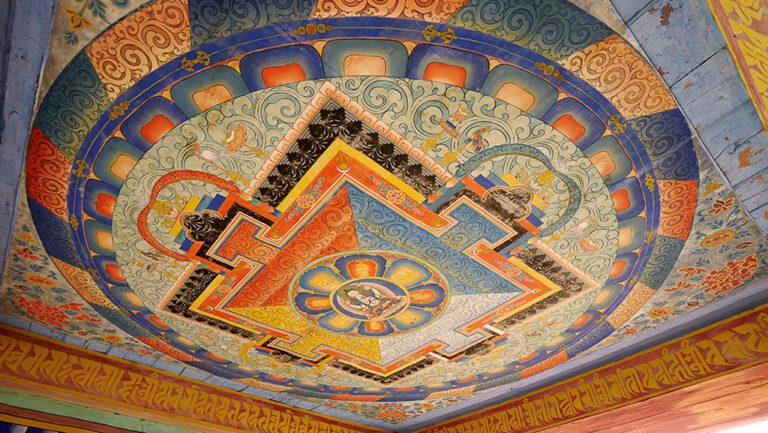
To reach both, follow the Haa Chhu River, a tributary of the mighty Brahmaputra River, which also runs through India and Bangladesh. You’ll pass a nine-hole golf course, Haa Nature Park, the Fortress of Haa, and a colorful stupa along the way.
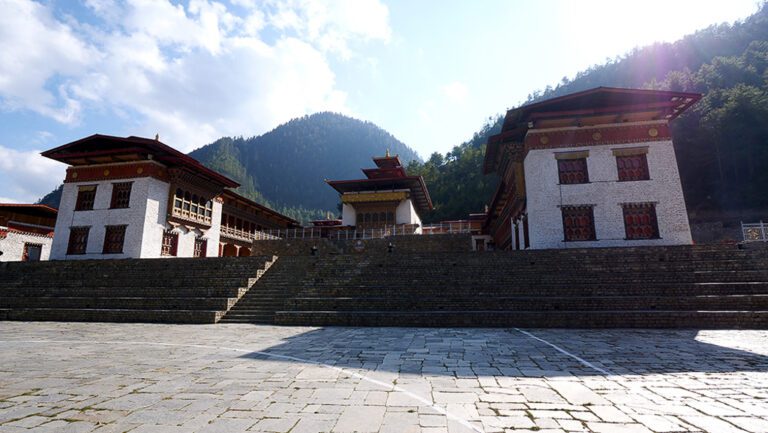
The White Temple, Lhakhang Karpo, has a huge wall around it. Through a massive carved door you’ll find several buildings surrounding an enormous courtyard. The resident monks live in residences off to the sides of the courtyard. There, you’ll also find a temple with a statue of the god of longevity, as well as paintings and murals of Buddhist deities, masters, and saints.

The temple is known for its architecture, which celebrates Bhutanese art and culture. Here, the Buddhist values of kindness and Dharma are embraced by locals and visitors alike. At Lhakhang Karpo, death is thought of as liberating, and life is believed to represent a gentle passage to that liberation.
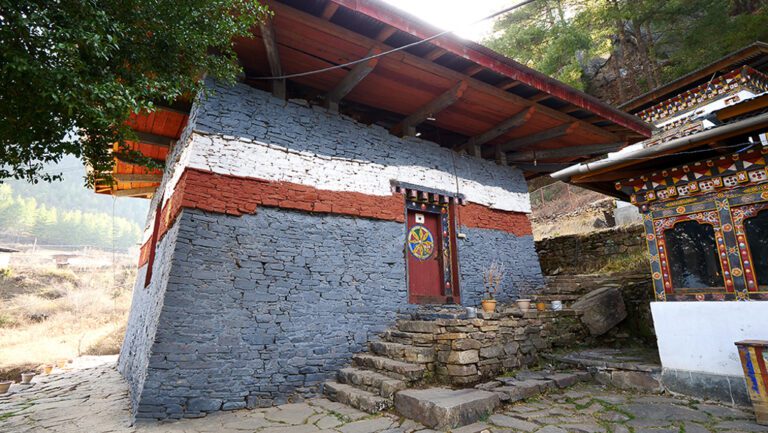
Further on down the path is Lhakhang Nagpo, the Black Temple. It’s much smaller than the White Temple and has very prominent black bricks on the lower half of the building, with red and white brick layers above it. The temple was built atop an underground lake that’s said to be home to a mermaid spirit called a tshomen.
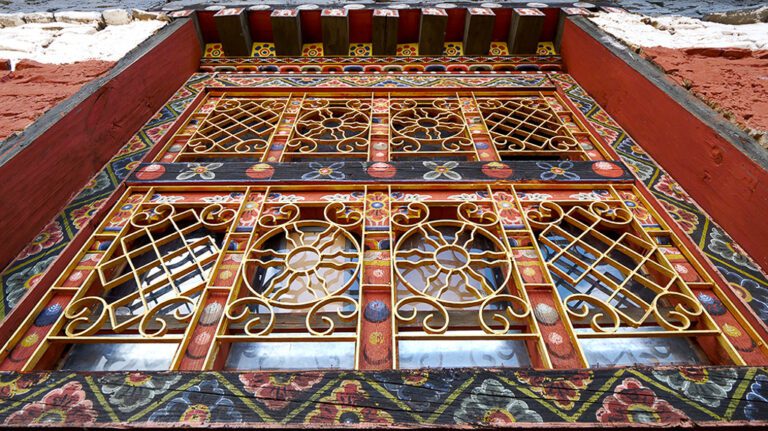
Inside the temple stand statues of the future Buddha, the second Buddha, and Bhutan’s unifier, Ngawang Namgyal. The statue of the future Buddha is particularly important, as it is thought that this statue has protected the people of Haa from famines and epidemics. Unlike the White Temple, there are no residences for monks at Lhakhang Nagpo. Instead, you’ll only find a small hut, which serves as the home of the caretaker and his dog.
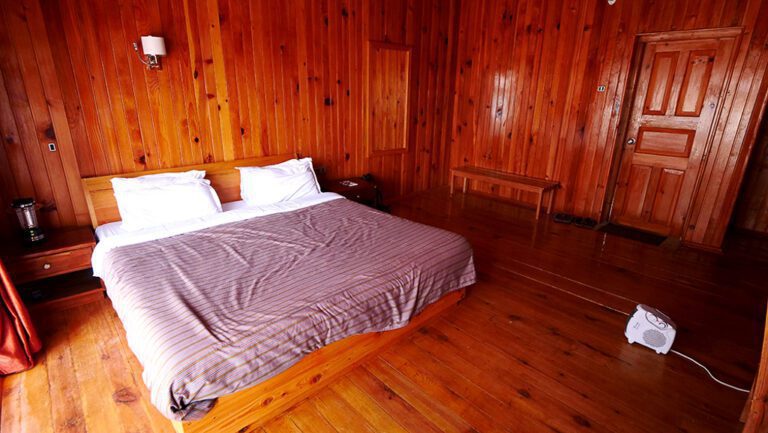
Even though Haa Valley doesn’t see many visitors, it still boasts a great hotel for travelers to stay at, the Risum Resort. This 14-room resort boasts beautiful, rustic rooms that include a living room with two couches and a table. The bedroom area features a large, king-sized bed, a TV, and a workstation. There’s also a spacious bathroom with a bathtub, a shower, and a hot water heater.
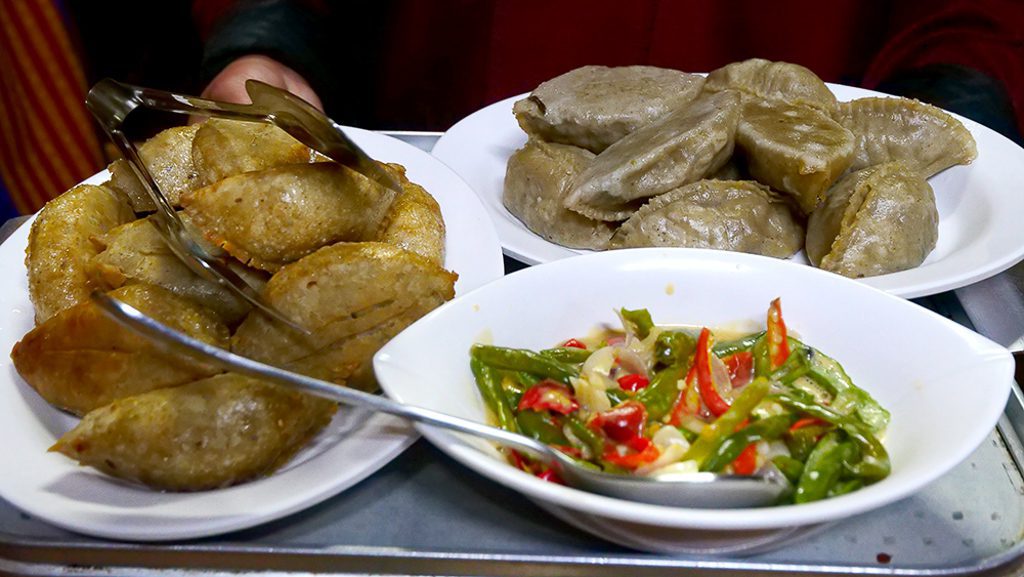
Dinner at the Risum Resort takes place in their dining hall, where you can try a variety of local dishes and others found around the country. They include steamed hoentay dumplings, fried hoentay dumplings, ema dashti, ara, chili paste, and ngaja (milk tea). Their ema dashti is particularly cheesy and spicy, while the chili paste doesn’t have much heat to it.
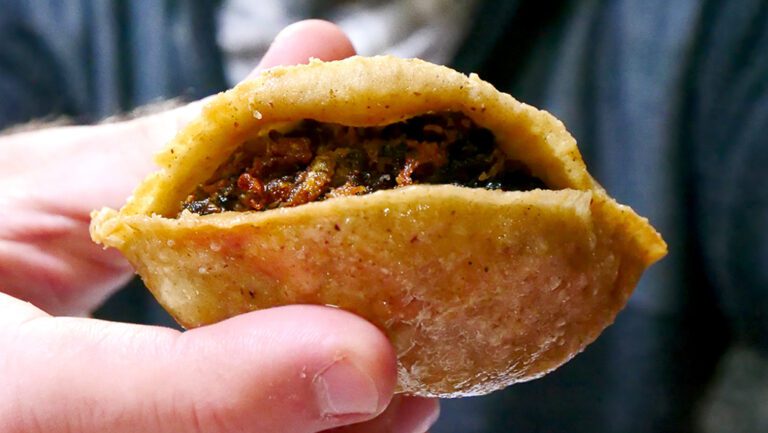
The best things on the menu are the two hoentay varieties. The fried ones tasted almost exactly like the fried empanadas I eat at home in Miami. I also enjoyed the steamed ones, which reminded me of the xiaolongbao soup dumplings I had enjoyed the previous year in Shanghai, China.

They’re both extremely tasty, but if I had to pick a favorite, it would be the fried variety. I loved trying both with the ema dashti and chili paste! Wash everything down with some of the resort’s delicious ara, which is clear and full of flavor.
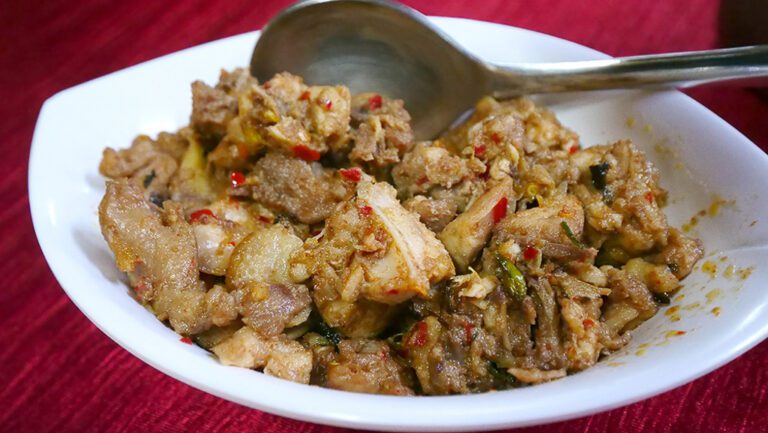
When you stay the night at Risum Resort, be sure to get up early to enjoy a traditional breakfast before you head out for another day of exploring. A traditional breakfast here is quite simple and consists of a large, dense ball of wheat bread, chicken curry with chilies, and a fiery ezay.
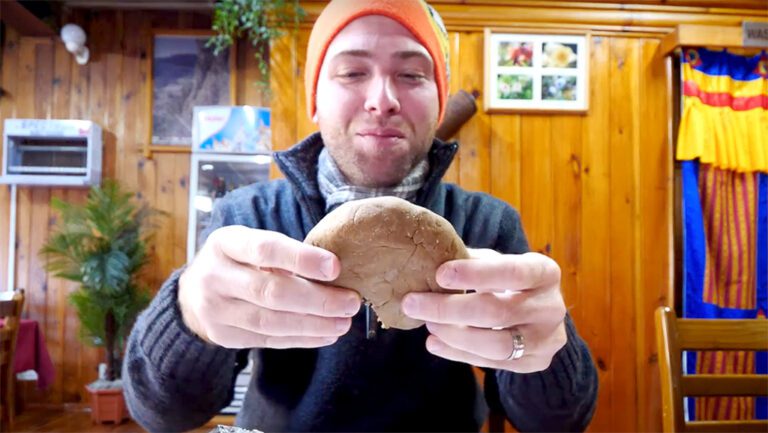
Haa Valley can be very cold in March when I visited, so I needed a hearty and heavy breakfast. You eat it by breaking off pieces of the wheat ball and eating them with bits of the chicken curry, which was more like a light gravy with no masala. For an added kick, you can add some of the ezay, but I stayed away from it because my stomach had had enough spicy food for once!
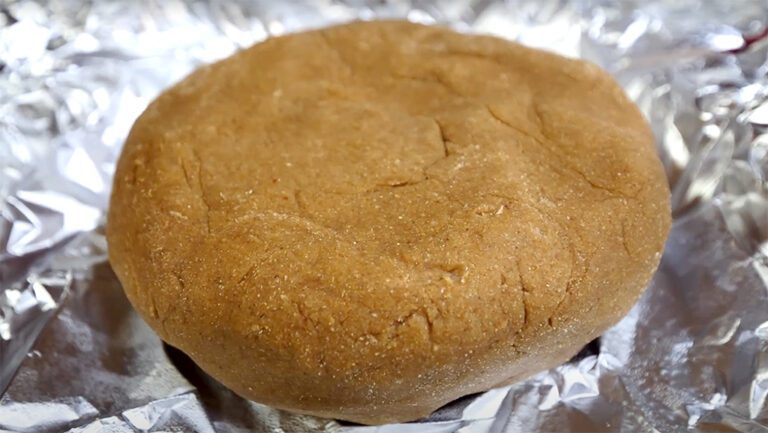
Overall, while it was a traditional breakfast in Haa Valley, I have to be honest. It wasn’t my favorite Bhutanese breakfast, but it was still quite decent. And it was great to try something a little different. I’m a big believer in trying as much of the local cuisine as you can when you travel, so this meal is still one of the top things to eat in Haa Valley, Bhutan!

Haa Valley may not be one of Bhutan’s top tourist destinations, but it’s well worth a visit. The journey to get there is one of the most scenic you’ll experience in western Bhutan. Once you get there, a whole new world of opportunities opens up in front of you. Whether you’d like to stay in town and explore the shops, take a hike to the local monasteries, or take a trek through the nearby forests and mountains, Haa Valley has something for you. Add in the reverence for tradition, and you’ve got a multi-faceted destination that’s waiting to be experienced. Book a trip to Bhutan today to check it out for yourself!
Huge thanks to my friends Tsheten and Nidup from MyBhutan for showing me around their beautiful country!
NOTE: If you need to check the visa requirements of a particular country, click here. To apply for a visa, find up-to-date visa information for different countries, and calculate the cost of a particular visa, click here!
Counter
101 Countries • 1432 Cities